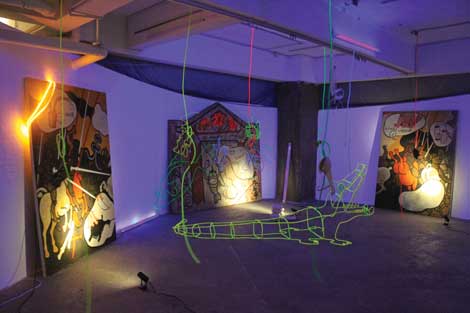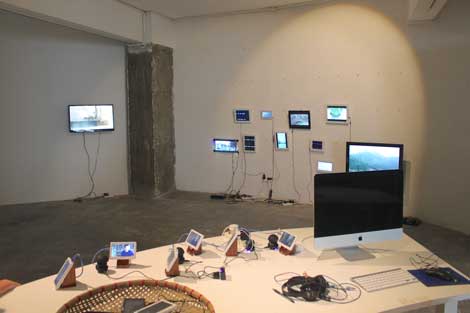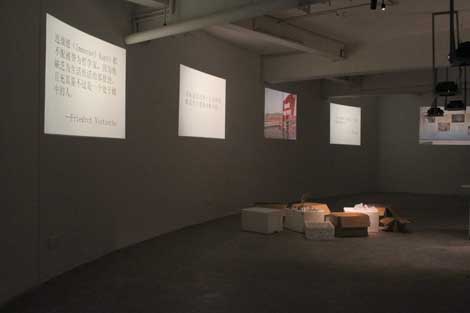In an unassuming location next to a bus station and a shopping arcade in the huge Southern Chinese city of Guangzhou is Vitamin Creative Space, an experimental art space created to engage with contemporary China but “inspired by the confrontation between contemporary Chinese life and traditional Chinese philosophy.”
Founded in 2002, Vitamin is part independent art space, part commercial gallery, supporting contemporary artists not only from China but also visual, sound and performance artists from Japan, Vietnam, Denmark and Lebanon. It features and promotes their work both at its Guangzhou space and also at major international galleries, art fairs and biennials. Its goal is to generate a vital energy, according to director/curator Wenjing Wang. “The energy, whenever there is an encounter with art, induces current that could drive a moment of intensities and break the dormancy of the creative seedling. This is the moment when we come into play—providing a nurturing ground for germination and facilitating the execution of idea.”
In the 14 years since it was established, Vitamin has nurtured a breadth of artists, including Xu Tan (b. 1957), an installation and video artist who joined the Guanzhou-based experimental artistic group Big Tail Elephant Group (Da Wei Xiang) in 1993. Highly intellectual and often scientific in his approach, Tan explores the intersection of concept, language and consciousness in much of his work, including his recent “Keywords Projects,” which investigate linguistic activities using multimedia. His more recent installation, “Questions, Soil and ‘Socio-Botanic,’” held at Vitamin in 2013, uses soil as a starting point to explore the way we use our land, what we grow on it and the level of awareness residents of China’s burgeoning cities have about rural areas.
Pak Sheung Chuen (b. 1977), born in Fujian but transplanted to Hong Kong, infuses his work with a playful attitude toward the experiences of everyday life, investigating coincidences, the arbitrary and the imaginative. His 2003 work Miracle of $132.30 features his receipt from a supermarket in which he has discovered the biblical verse, “Whoever believes in him shall have eternal life” (John 3:16), hidden in the list of items he purchased. At Vitamin, for his installation “Sensory Training” (2012), he gathered entries from a journal he kept while traveling around the city of Guangzhou “capturing interesting ideas.” Printed over the gallery walls, ceiling and floor, this single line of text—about views from the train window, making life longer by not wasting time, and a white orange—represents a journey of random thoughts and ideas traveling through our minds.
Vitamin has recently spotlighted Japanese video and conceptual artist Koki Tanaka (b. 1975), who trained in Tokyo, Vienna and New York and now lives in Los Angeles. For some of his newer work, Tanaka draws on ancient Zen themes from the Japanese tea ceremony such as ichi-go ichi-e (literally, “one time, one meeting”) to create unique moments of collective activity, recruiting five pianists to play a single piano at once, five potters to make one bowl, nine hairdressers to cut one head of hair.
Though Beijing and Shanghai are better known internationally for their contemporary art scenes, the dynamic, global approach of Vitamin Creative Space reflects the complex and dynamic history of the city of Guangzhou (once Canton), which has long been an entry point for new cultural forces and ideas to China, from Arab Muslim travelers and traders more than a millennium ago to the Portuguese Jesuits of the 16th century. From here, Vitamin is well positioned to cultivate the seeds of cultural confrontation and watch them burst into bloom.




